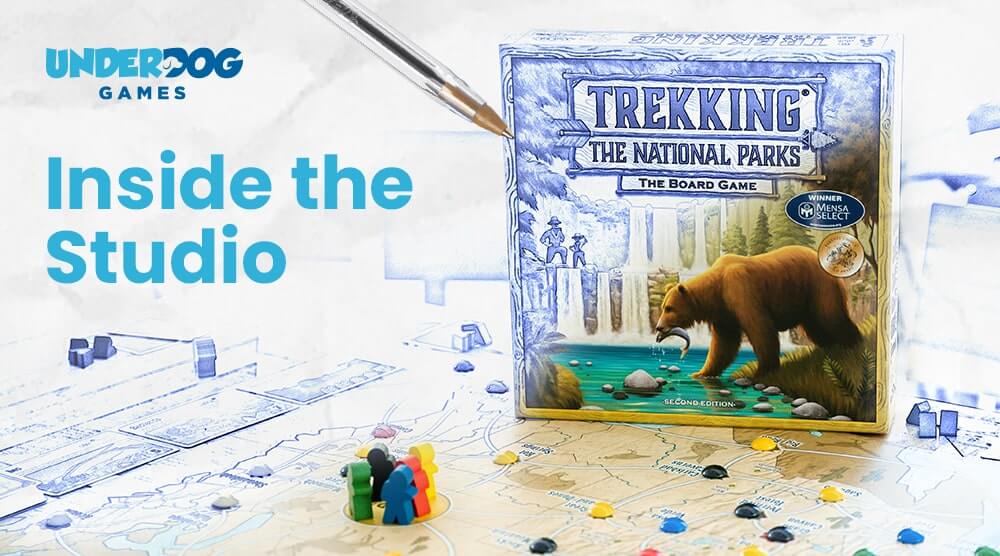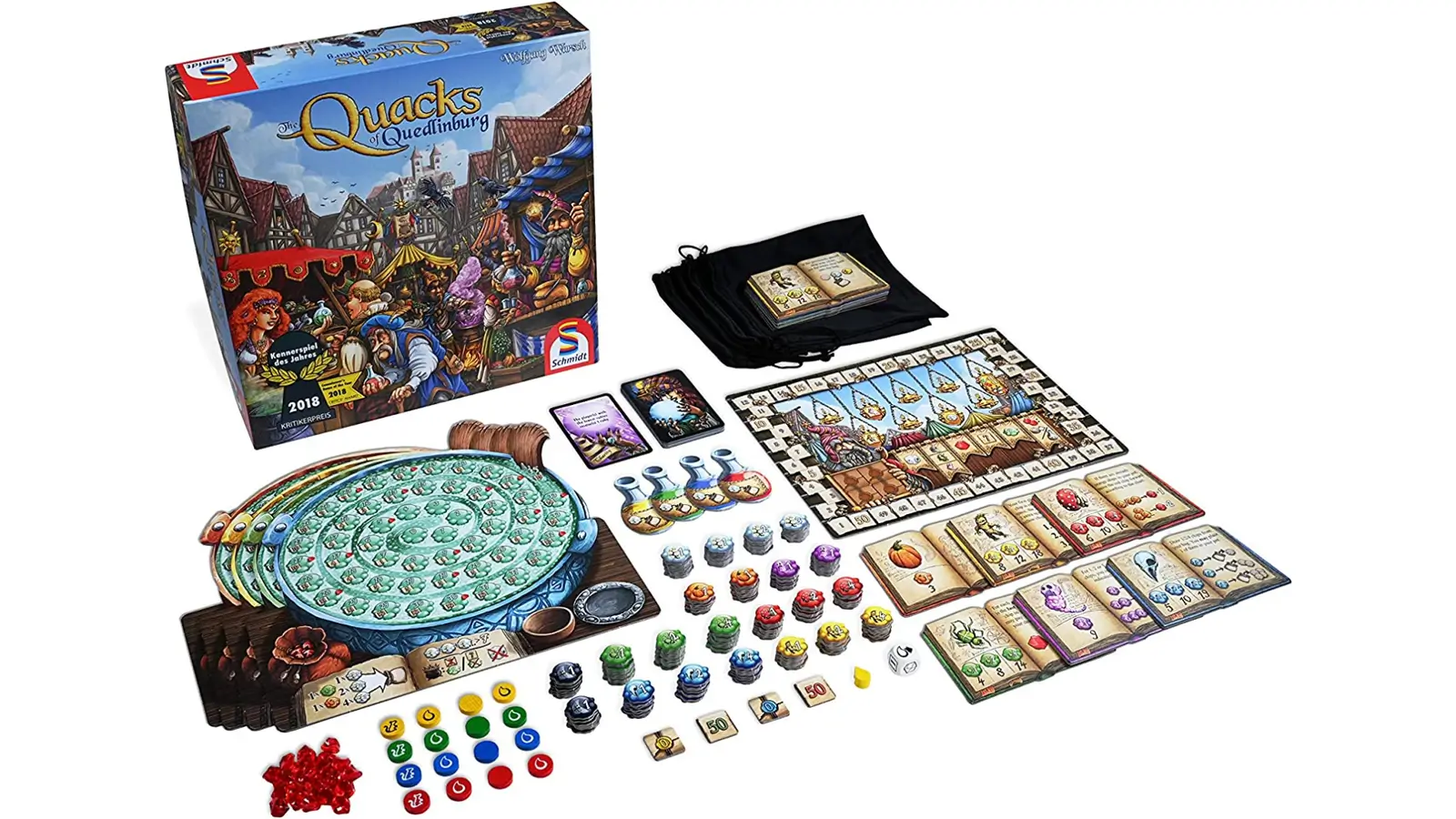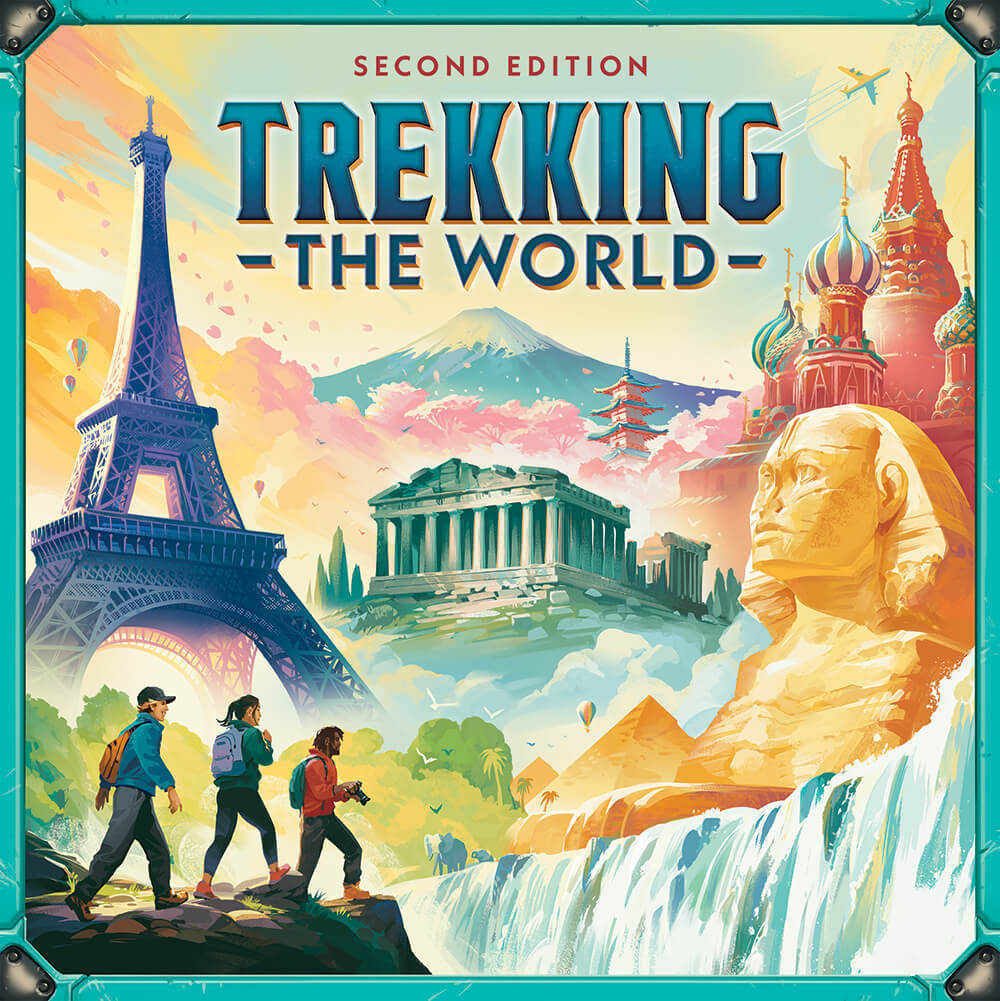Welcome to this week's behind-the-scenes post.
Why and how I design catch-up mechanisms into games
There are a bunch of features I try to design into games which can add to the fun, but which also create negative side effects.
Three examples are escalation, compounding interest, and “big” turns. All three can make games more fun, but they all share the same side effect:
They tend to cause runaway leader problems.
So, if I want to design these things into games, I ALSO have to design avenues through which trailing players can get back into contention.
In other words: I have to design in catch-up mechanisms.
Problem: I don’t like how catch-up mechanisms are usually done
Specifically, they often feel too obvious and too automatic to me.
Consider the legendary game Quacks of Quedlinburg:
It’s is an almost perfect game except for one thing: its catch-up mechanism.
In that game, depending on how far you are behind the leader, you get to start "further ahead" each round.
What I don't like about this: it doesn’t let the player feel agency for their actions. It’s a Deus ex Machina in which the player plays no part, and which makes their own choices less meaningful.
My own favorite catch-up mechanisms are mostly invisible, and catching up depends on the players’ choices, so they can feel responsible for having come back.
An Example
Here's an example from American football:
The closer the offense is to the end zone, the less space the defense has to cover to successfully defend.
Thus, the closer the offense gets to scoring a touchdown, the harder it becomes to score one. This is a catch-up mechanism that operates within a single possession. If you consider a single possession as a kind of game in itself, this game has a catch-up mechanism.
It's unobtrusive while creating drama by keeping the outcomes of some possessions more uncertain than they would otherwise be.
Moreover, the defense still has to actually defend. It feels like their choices matter more than in a game like Quacks of Quedlinburg, whose catch-up mechanism feels to me like the equivalent of giving free points to a team that gets scored on.
This is the kind of thinking we brought to the design of our upcoming game Trekking the World 2nd Edition. However, I'm not going to talk about how we built the catch-up mechanism in that game yet.
I want to see if and how players spot and experience the catch-up dynamics on their own before writing about them. So I'll stop here.
What do you think? Do you have opinions about how catch-up mechanisms should work in board games?
Best,
Nick





